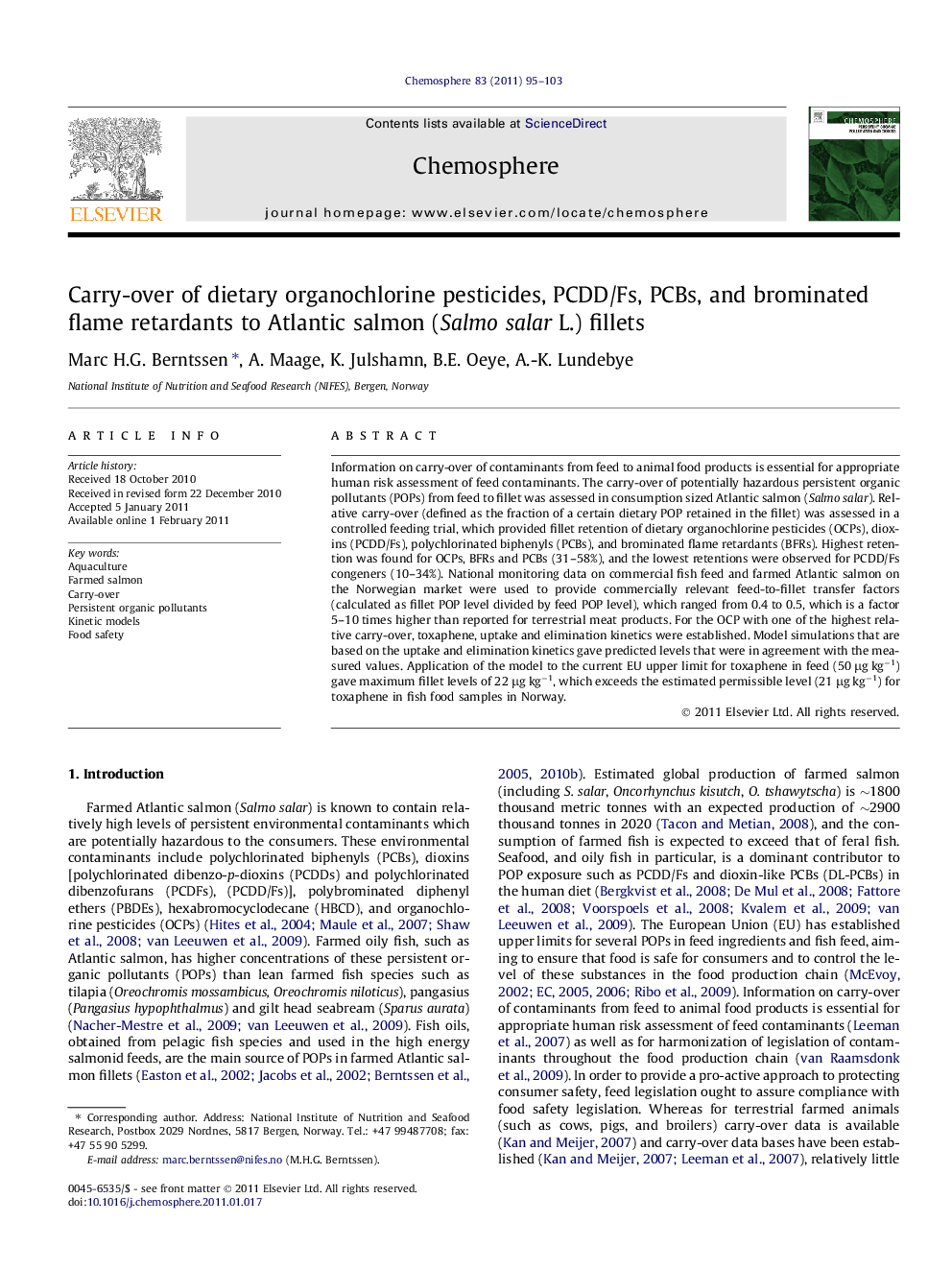| کد مقاله | کد نشریه | سال انتشار | مقاله انگلیسی | نسخه تمام متن |
|---|---|---|---|---|
| 4410794 | 1307564 | 2011 | 9 صفحه PDF | دانلود رایگان |

Information on carry-over of contaminants from feed to animal food products is essential for appropriate human risk assessment of feed contaminants. The carry-over of potentially hazardous persistent organic pollutants (POPs) from feed to fillet was assessed in consumption sized Atlantic salmon (Salmo salar). Relative carry-over (defined as the fraction of a certain dietary POP retained in the fillet) was assessed in a controlled feeding trial, which provided fillet retention of dietary organochlorine pesticides (OCPs), dioxins (PCDD/Fs), polychlorinated biphenyls (PCBs), and brominated flame retardants (BFRs). Highest retention was found for OCPs, BFRs and PCBs (31–58%), and the lowest retentions were observed for PCDD/Fs congeners (10–34%). National monitoring data on commercial fish feed and farmed Atlantic salmon on the Norwegian market were used to provide commercially relevant feed-to-fillet transfer factors (calculated as fillet POP level divided by feed POP level), which ranged from 0.4 to 0.5, which is a factor 5–10 times higher than reported for terrestrial meat products. For the OCP with one of the highest relative carry-over, toxaphene, uptake and elimination kinetics were established. Model simulations that are based on the uptake and elimination kinetics gave predicted levels that were in agreement with the measured values. Application of the model to the current EU upper limit for toxaphene in feed (50 μg kg−1) gave maximum fillet levels of 22 μg kg−1, which exceeds the estimated permissible level (21 μg kg−1) for toxaphene in fish food samples in Norway.
Research highlights
► Information on carry-over of contaminants from feed to animal food products is essential for appropriate human risk assessment of feed contaminants.
► Highest carry-over was found for OCPs, BFRs and PCBs (31–58%), and the lowest retentions were observed for PCDD/Fs congeners (10–34%).
► Model simulations of toxaphene carry-over showed that the current toxaphene upper limit for feeds exceeds the estimated permissible level for toxaphene in fish food samples.
Journal: Chemosphere - Volume 83, Issue 2, March 2011, Pages 95–103